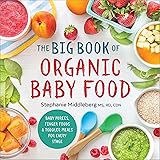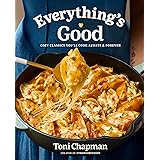Navigating the dairy aisle in today’s grocery stores can often feel overwhelming, with a plethora of options ranging from conventional to grass-fed, organic, and various plant-based alternatives. A recent industry report indicates that approximately 60% of consumers actively seek healthier food choices, which includes a growing demand for transparent labeling and higher quality ingredients in their daily provisions. Understanding these distinctions is paramount when striving to select the best milk and butter for your nutritional needs and culinary endeavors.
The accompanying video offers a comprehensive initial guide to discerning superior dairy products. Nevertheless, a deeper exploration into the nuances of dairy farming practices, nutritional profiles, and specific processing methods is warranted for the truly discerning shopper. Careful consideration of these elements ensures that informed decisions are made, ultimately impacting both personal health and broader environmental sustainability.
Deconstructing Milk: From Conventional to Organic and Grass-Fed Excellence
The journey to superior dairy often commences with an examination of its origin, specifically the feeding and living conditions of dairy cows. Conventional milk, frequently categorized by some as “Monsanto milk,” typically originates from cows sustained primarily on genetically modified (GMO) grain, often a blend of corn and soy. This agricultural practice is known to impact the nutritional composition of the milk produced, potentially introducing residues from pesticides and herbicides used in GMO crop cultivation. Furthermore, the confined conditions in which these cattle are often raised can compromise animal welfare and contribute to environmental concerns.
An incremental improvement is realized with organic milk, which adheres to USDA Organic standards. By law, organic dairy cows must be pasture-raised for a minimum of four months annually, allowing them access to grazing. Importantly, their feed is mandated to be 100% non-GMO and cultivated without the use of most synthetic pesticides, fertilizers, or growth hormones. While this represents a significant step forward in both animal welfare and ingredient purity, the term “organic” does not unequivocally guarantee a fully grass-fed diet, leaving room for a substantial portion of their diet to still consist of organic grains.
The Pinnacle of Purity: 100% Grass-Fed Organic Milk
For those prioritizing optimal nutrition and ethical farming, 100% grass-fed organic milk stands as the gold standard. In this system, dairy cows exclusively consume grass and forage, mirroring their natural diet. This dietary regimen profoundly impacts the milk’s nutritional profile, typically resulting in higher concentrations of beneficial compounds. Specifically, grass-fed milk contains elevated levels of Omega-3 fatty acids, which are crucial for cardiovascular health and inflammation reduction, compared to their grain-fed counterparts. Additionally, conjugated linoleic acids (CLA), particularly the health-promoting c9, t11 isomer, are significantly more abundant in milk from grass-fed cows, offering potential anti-carcinogenic and immune-modulating benefits. The environmental advantages are also notable, as rotational grazing practices can enhance soil health and sequester carbon, thereby supporting regenerative agriculture.
Fat Content: Whole Milk Versus Reduced-Fat Variants
Historically, reduced-fat milk gained popularity during an era when dietary fat was erroneously demonized. However, contemporary nutritional science confirms that high-quality animal fats are integral to a balanced diet. Whole milk, especially from grass-fed sources, provides a greater abundance of fat-soluble vitamins such as A, D, E, and K2, along with the aforementioned Omega-3s and CLA. These fats also contribute significantly to satiety, helping to regulate appetite and prevent overeating. Opting for whole milk ensures the consumption of these valuable nutrients, which are often diminished or removed during the fat-reduction process. For instance, the Omega-3 content is inextricably linked to the fat content, meaning a reduced-fat product will invariably offer less of these beneficial lipids.
Specialty Milk Options: Understanding Their Unique Properties
Beyond the primary classifications, the dairy market offers several specialized milk products, each designed to address specific consumer preferences or dietary sensitivities. One such innovation is ultra-filtered milk, which undergoes a rigorous filtration process akin to that used for Greek yogurt. This method effectively concentrates protein and reduces lactose, resulting in a product with approximately 50% less sugar and a higher protein content, often reaching 13 grams per serving. While not always available in a grass-fed format, its attributes make it a compelling choice for individuals seeking lower sugar intake or higher protein in their dairy consumption. Similarly, the reduced lactose content can be advantageous for those with mild lactose intolerance, offering a more digestible option without chemical additives.
A2 milk presents another interesting development, primarily addressing issues related to casein protein sensitivity. Standard cow’s milk contains both A1 and A2 beta-casein proteins, but some individuals experience digestive discomfort from the A1 variant. A2 milk is sourced from cows that naturally produce only the A2 type of beta-casein, which is thought to be more digestible for these sensitive individuals. Nevertheless, it is often challenging to find A2 milk that is also certified organic or 100% grass-fed, necessitating a careful evaluation of priorities when making a selection.
The Impact of Pasteurization and Homogenization on Milk Quality
Pasteurization, a heat treatment process designed to eliminate harmful bacteria, is a mandatory step for most commercially sold milk. However, the method and intensity of pasteurization can significantly influence the milk’s enzymatic activity and nutrient integrity. High-Temperature, Short-Time (HTST) pasteurization, commonly used for refrigerated milk, involves heating milk to approximately 161°F (72°C) for 15 seconds. This method effectively kills pathogens while minimally affecting many heat-sensitive enzymes and beneficial bacteria, preserving a more “living” product. In contrast, Ultra-High Temperature (UHT) pasteurization subjects milk to much higher temperatures, around 280°F (138°C), for just a few seconds. While this significantly extends shelf life to several months without refrigeration, it also denatures virtually all enzymes and many heat-sensitive nutrients, reducing the milk to essentially a sterile calcium water with a distinctly “cooked” flavor profile.
Homogenization is a mechanical process that breaks down fat globules in milk, dispersing them evenly to prevent the cream from separating and rising to the top. While it provides a uniform texture, some argue that this process may alter fat structures, potentially affecting digestibility or nutrient absorption. Non-homogenized milk, often characterized by a visible “cream top,” appeals to those who prefer a less processed product and appreciate the richer mouthfeel of unaltered dairy fat. An example like Kalona SuperNatural is praised for its non-homogenized, pasture-raised (though not 100% grass-fed) organic milk, offering a premium experience with a traditional cream line.
Raw Milk: An Unprocessed Alternative
For the most adventurous and informed consumers, raw milk represents the purest form of dairy, being neither pasteurized nor homogenized. This unprocessed milk retains all its natural enzymes, beneficial bacteria, and full nutrient spectrum, which are often diminished or destroyed during heat treatment. The flavor profile of raw milk is frequently described as exceptionally creamy and rich, a stark contrast to the often flat taste of extensively processed milk. However, accessing raw milk requires sourcing it directly from reputable farms, often through herd-share programs, due to varied state-specific regulations on its sale. Adherence to stringent hygiene and testing protocols at the farm level is absolutely critical to ensure its safety and prevent the transmission of pathogens.
Deciphering Butter: Crafting Superior Culinary Experiences
Butter, an ancient and beloved staple, has undergone its own evolution within the modern food system. The choice of butter significantly impacts both the flavor of prepared dishes and the nutritional benefits derived from its consumption. Primarily, butter quality is dictated by its fat content and the feeding practices of the dairy cows. The primary distinction often encountered is between American-style and European-style butter, a difference deeply rooted in their manufacturing processes and resultant characteristics.
The Butterfat Difference: American Versus European Butter
European-style butter is distinguished by its higher butterfat content, typically ranging from 82% to 84%, compared to the 80% minimum mandated for American butter. This higher fat percentage results from a longer churning process, which expels more water from the cream. Consequently, European butter offers a richer, more concentrated flavor and a superior texture, making it ideal for baking, sautéing, and finishing dishes. Its reduced water content contributes to flakier pastries and more flavorful sauces. Conversely, American butter, with its slightly higher water content, can sometimes lead to less desirable textures in culinary applications, although it remains perfectly suitable for general use.
As with milk, the nutritional quality of butter is intrinsically linked to the diet of the dairy cows. Organic and grass-fed butter are preferred choices, providing the same benefits of non-GMO feed and enhanced nutritional profiles, including elevated Omega-3s and CLAs. Kerrygold, a popular Irish brand, exemplifies European-style, grass-fed butter, renowned for its vibrant yellow color and distinctive flavor, both indicative of a grass-rich diet. Despite U.S. tariffs imposing a 25% surcharge on Irish dairy products, its quality remains highly regarded. It is important to note, however, that while Kerrygold cows are grass-fed for approximately 80% of the year in accordance with Irish dairy law, supplementary grain feeding may occur during the remaining 20%, particularly during harsh winter months.
Exploring Cultured and Vegan Butter Alternatives
Cultured butter represents another dimension of flavor, produced by inoculating cream with microbial cultures before churning. This fermentation process imparts a distinct, tangy, and often nutty flavor profile reminiscent of buttermilk, adding complexity to both savory and sweet preparations. It provides a unique culinary experience for those seeking depth beyond conventional butter. Brands like Organic Valley offer excellent organic cultured butter, which can elevate simple toast or vegetable dishes.
For those adhering to plant-based diets, the market for vegan butter has expanded considerably, yet careful scrutiny of ingredients is essential. Many conventional vegan spreads often utilize highly processed, inflammatory oils such as canola oil, palm oil, or safflower oil, along with artificial “natural flavors.” These ingredients can counteract the intended health benefits of a plant-based diet. Therefore, discerning consumers must prioritize products made with healthier, less processed oils. Miyoko’s Kitchen, for example, has garnered acclaim for its cultured vegan butter, often made with a blend of coconut oil, cashew milk, and sunflower oil, providing an authentic taste and texture without relying on detrimental oils. Its cultured aspect gives it a depth of flavor that mimics traditional dairy butter remarkably well.











